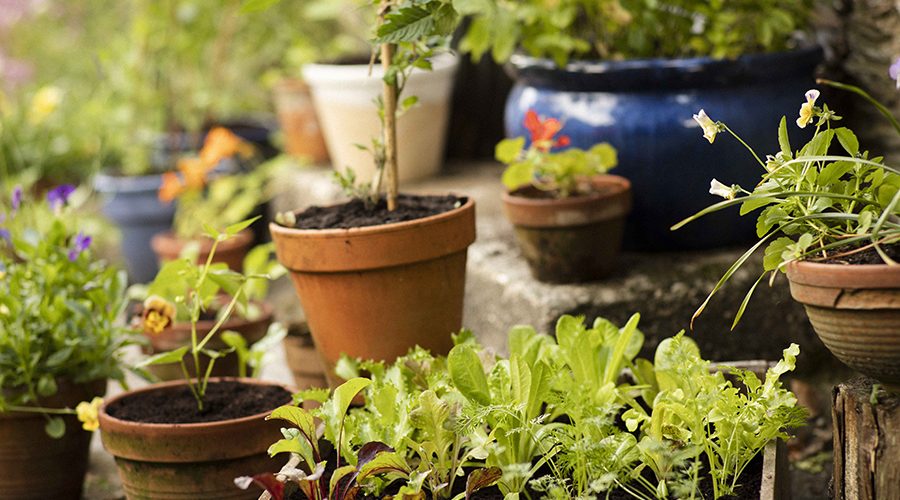It’s very rewarding to transform a small space into an abundant veg garden – you can grow a good amount in just a few pots, and by using a range of different sized containers and arranging them on different levels, you can make it look fab too.
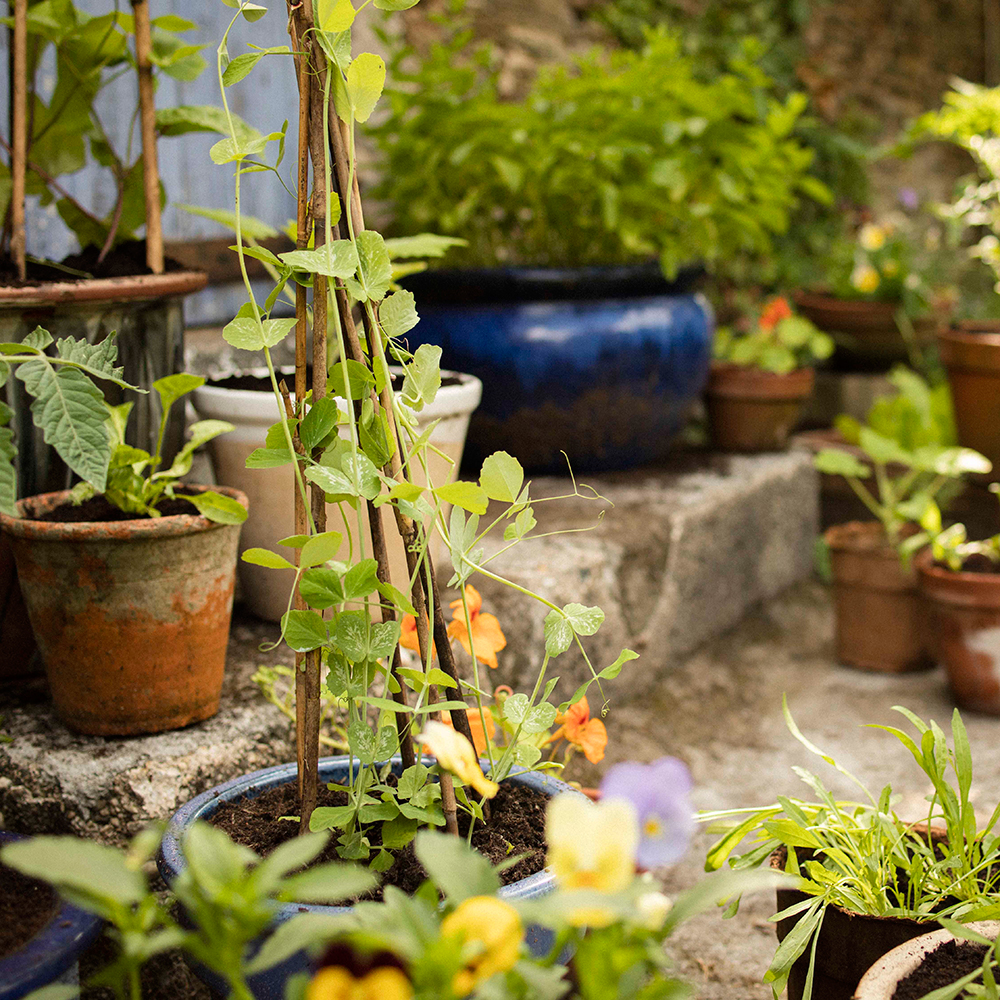
Set containers at different levels
If you have them, consider using outdoor steps to your advantage for creating different tiers. Positioning the pots on different levels creates more of an aesthetic, and of course it helps the plants to access sunlight more easily too whilst also keeping air circulation nice and clear, thus helping to prevent fungal diseases.
If you don’t have steps, you can create a similar effect by using step-ladder style shelving for outdoors, or use logs, rocks or slabs to create different heights. You can also achieve good results by standing a container on an upturned pot.
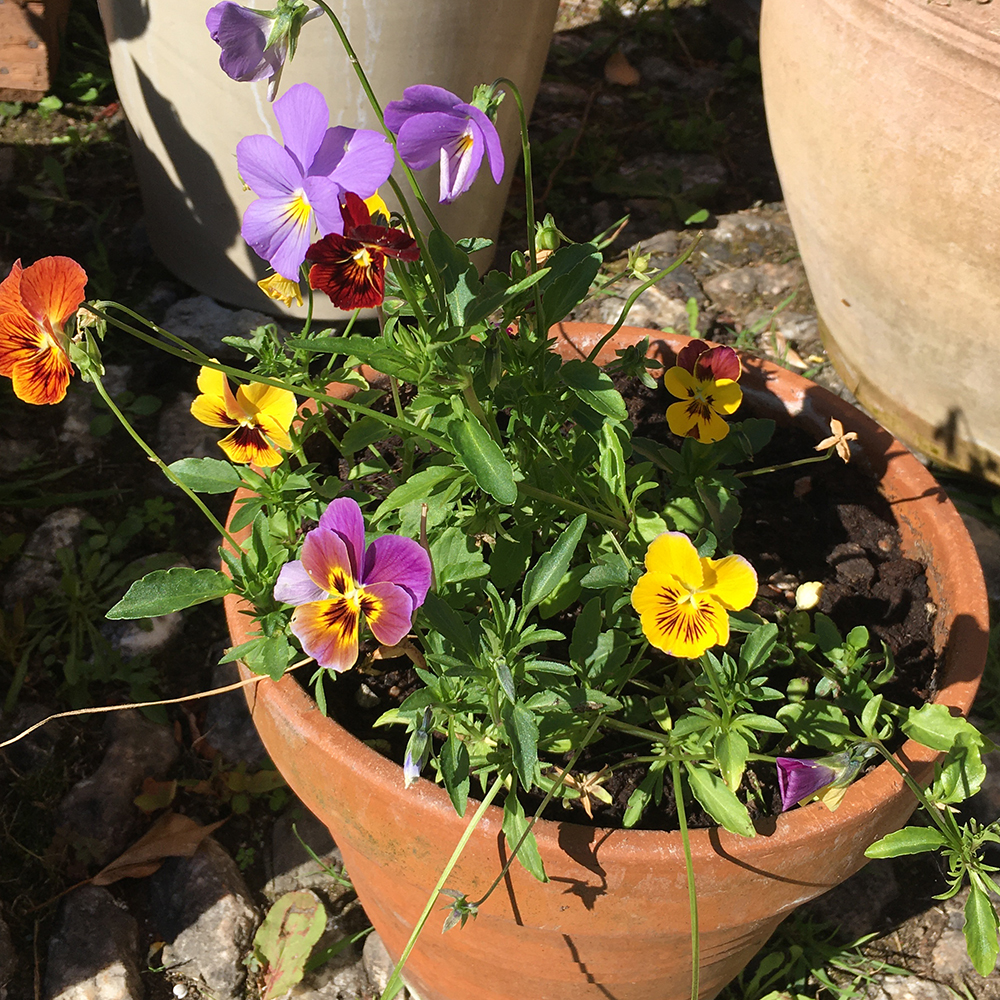
Include flowers & companions
Not only do they look pretty, but they will really help to draw pollinators to your container garden – if you’re growing tomatoes, beans or other pollination-dependent veggies, then extra flowers are a must.
Violas are excellent for pots, and try nasturtiums, calendula and tagetes as well. You can even plug them into larger pots alongside your veggies (i.e they don’t necessarily need their own dedicated pot) – try popping tagetes in a wide, deep planter with tomatoes, for example.
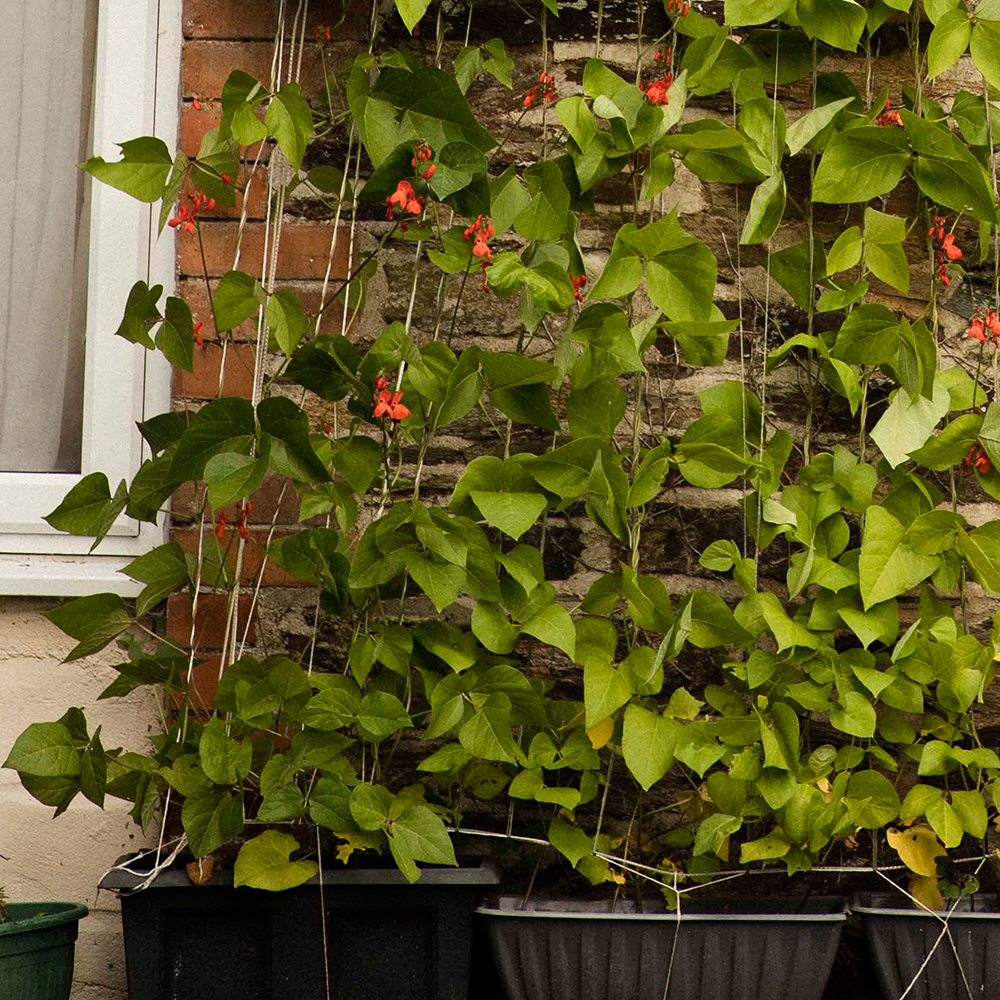
Use walls & fences
Walls, fences and trellises can be used to offer space for climbers, like these climbing runner beans. With just two or three deep window boxes set in front of a wall, you can easily grow climbing beans, tomatoes, squash or cucumbers, training them up the wall.
You can then set up pots and containers in front of them to grow other crops – different levels will come in handy in this instance as well. If you raise the containers that sit along the wall, then those plants at the back will still be able to reach good sunlight even if you position other pots in front of them.
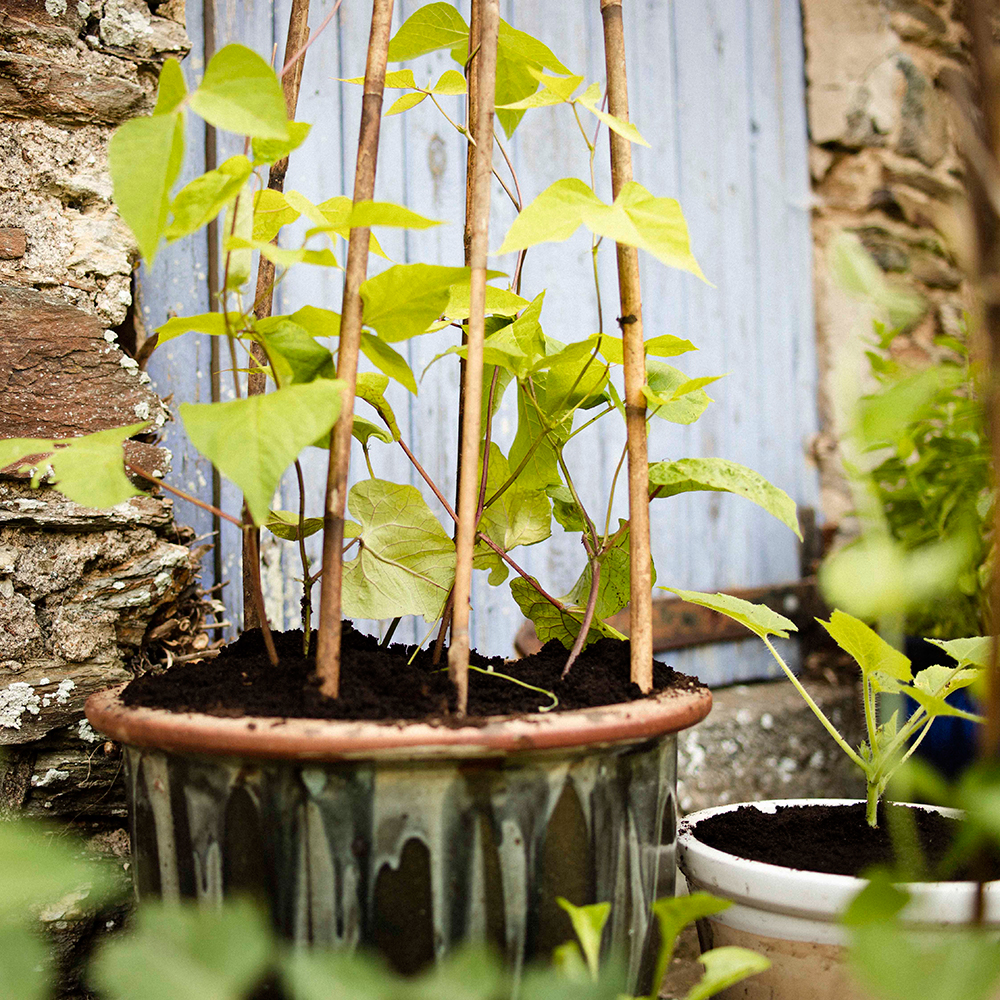
Remember - tall plants at the back
When you plant and position your veg crops, you need to put the taller growing crops at the back so that they don’t cast shade across smaller crops. So, full sized sweetcorn plants, tomatoes, climbing beans, larger brassicas would be best at the back, then leeks, potatoes, dwarf beans, carrots and fennel in the middle, whilst things like wild rocket, lettuces, beetroot and spring onions could come to the front.
Look at how the sunlight travels in your own garden, and position the pots and plants accordingly.
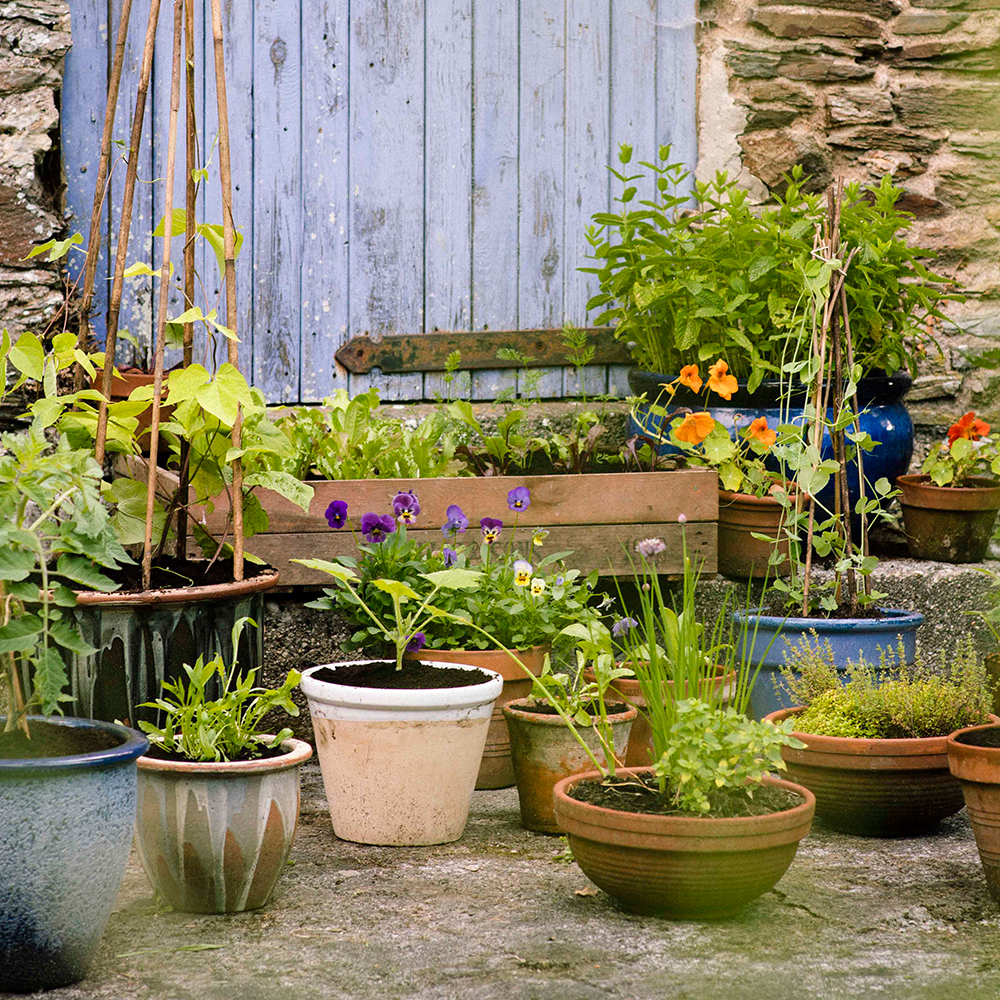
Mix up different shapes and sizes
When you’re choosing pots and containers, choose a medley of different things according to your own tastes (and budget) – you can usually find a good selection on things like freecycle and marketplace, and you’ll want to have different sizes and depths to accommodate the different plants and their growing requirements. Carrots would need a deeper container than beetroots, for example, and you may want to have a big square planter for salads, or a wide, deep planter for potatoes or squashes and courgettes.
Don’t fall into the trap of buying all one size/style just because they are cheap, as you will struggle to get the best from your plants if they do not have the space they need for their roots.
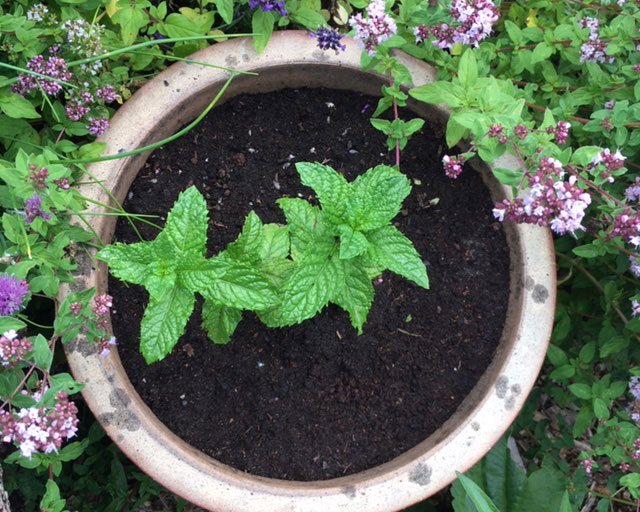
Add herbs to your container garden
A pot filled with mint, or some chives and coriander or parsley will make all the difference when it comes to harvesting, as you’ll have the delicious leaves to use in cooking to spruce up your veggies.
Herbs are a nice way of creating a bit of texture as well, and most flower and attract pollinators too. You can also plant up combinations of herbs in a single container that can look very attractive – thyme, sage and rosemary have similar growing conditions and can be planted together, or plant parsley with dill or coriander and some chives.

